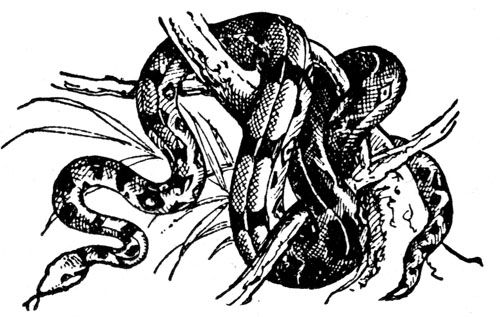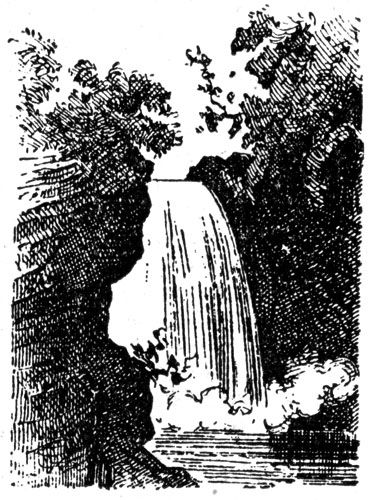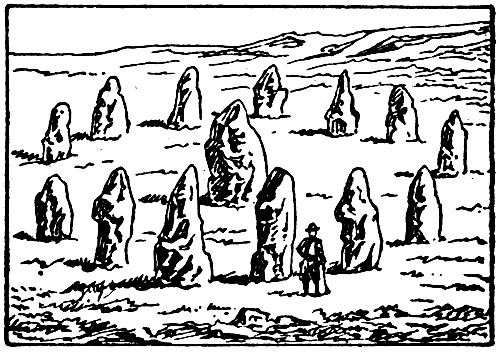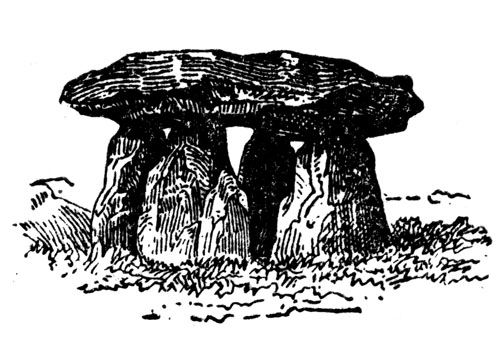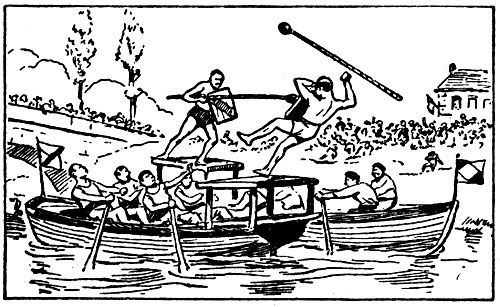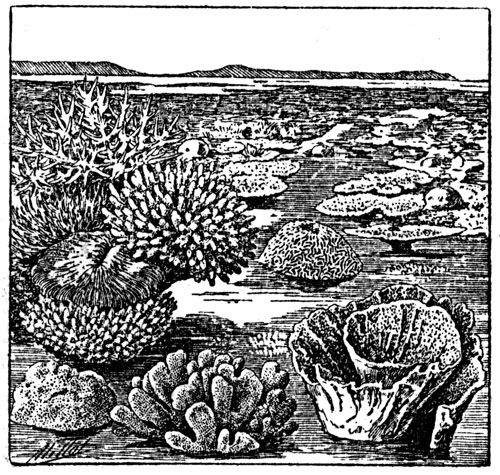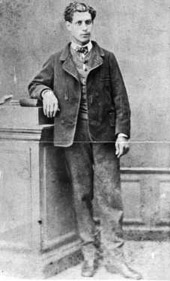First attempt at theory.
(From something I’m having trouble writing about several versions of the Faust story:)
In his Abeze- und Lesebuch [ABC and Reader] of 1807, the German pedagogue Joachim Heinrich Campe warned against teaching children to read before the age of six, arguing that it was better to allow them first to exercise their senses with direct perceptions of nature than to start by conveying knowledge about nature through printed or written signs. Campe worried especially that reading too early could harm a child’s ability to perceive things directly: “Die Erlernung und die oft wiederholte Vorstellung der Zeichen schwächen und lähmen in jungen Seelen den Trieb zur klaren und lebendigen Vorstellung der Sachen; sind wenigstens ein langweiliger und ermüdender Umweg zu diesen; verhalten sich zu ihnen gerade so, wie das nahrungslose, bloß hinhaltende, bloß beschwichtigende Lutschbeutelchen zu der vollen Mutterbrust [The learning and the often repeated imagination of signs weaken and lame in the young soul the drive to the clear and lively imagination of things; are at least a boring and tiring detour on the way to the latter; are in precisely the same relation to them, as the non-nutritive, simply delaying, simply appeasing pacifier is to the full mother’s breast].” Campe’s concern with the matter of reading here coincides metaphorically with his promotion of breast-feeding in the Allgemeine Revision des gesammten Schul- und Erziehungswesens (General Revision of Schools and Education, 1785), where in a contribution entitled “Diätetik der Säugenden” [Dietetics of Nursing Babies] one Konrad Friedrich Uden develops Rousseau’s construction (in Émile) of breast-feeding as the cornerstone of bourgeois morality into a 200-page antecedent of a La Leche League manifesto attacking wet-nursing in favor of nursing by mothers themselves. The metaphor is, so to speak, pregnant: representing one kind of distancing with another – the gap between child and reality by the gap between infant and breast – it addresses, in two different registers, what seems to me a form of anxiety characteristic of the second half of the eighteenth century. We might trace its origins, or at least its first canonical literary formulations, to Rousseau’s preoccupation with what Jean Starobinski has called “transparency,” and its obstruction. “Qu’il serait doux de vivre parmi nous,” Rousseau writes in the Discourse on Arts and Sciences (1750), “si la contenance extérieure était toujours l’image des dispositions de coeur” [How sweet it would be to live among us, if the outward countenance were always the image of the dispositions of the heart]. Starobinski notes that this sense of a rupture between appearance and being – of opacity or an obstruction where there should be transparency or access – “engenders other conflicts, like a series of amplified echoes: rupture between good and evil (between good and bad people), rupture between nature and society, between man and his gods, between man and himself.” This preoccupation seems certainly to have extended, for Rousseau, both to the alienation from nature effected by language and to the general social alienation that he construed as a consequence of women’s refusing to nurse their own babies.
[…]
In general (Starobinski notes further), Rousseau’s theory of Man’s corruption by social life – in which, from the First Discourse on, such rupture so centrally figures – rewrites the Biblical drama of the Fall. In the Discourse on Arts and Sciences, Rousseau “rewrites a philosophical Genesis where neither the Garden of Eden nor sin nor the confusion of languages is lacking. A laicized, ‘demythologized’ version of the history of origins, but which, supplanting Scripture, repeats it on another language. […] Man, in his first condition, hardly emerges from animality; he is happy: this primitive condition is a paradise; he will never emerge from animality until he will have had an opportunity to exercise his reason, but with the increasing capacity for reflection there comes the knowledge of good and evil, the uneasy conscience discovers the misfortune of separated existence: it is therefore a fall.” In the Confessions, Rousseau dates an original loss of immediacy of experience to the age at which he began to read, aligning this loss with the Fall by construing the outcome as alienation in a self-consciousness from which he cannot return: “J’ignore ce que je fis jusqu’à cinq ou six ans: je ne sais comment j’appris à lire; je ne me souviens que de mes premières lectures et de leur effet sur moi: c’est le tems d’où je date sans interruption la conscience de moi-même [I have no idea what I did before the age of five or six: I do not know how I learned to read; all I remember is what I first read and its effect on me; this is the moment from which I date my first uninterrupted consciousness of myself].” Calling early learning from reading a “dangerous method,” he observes a similar problem to Campe with signs as ersatz experience: “Je n’avois aucune idée des choses, que tous les sentimens m’étoient déjà connus. Je n’avois rien conçu; j’avois tout senti. Ces émotions confuses que j’éprouvois coup sur coup n’alteroient point la raison que je n’avois pas encore: mais elles m’en formérent une d’une autre trempe, et me donnerent de la vie humaine des notions bizarres et romanesques, dont l’experience et la réflexion n’ont jamais bien pu me guérir [I had as yet no ideas about things, but already I knew every feeling. I had conceived nothing; I felt everything. This rapid succession of confused emotions did not damage my reason, since as yet I had none; but it provided me with one of a different temper; and left me with some bizarre and romantic notions about human life, of which experience and reflection have never quite managed to cure me]. The lesson recurs in Émile: “Que sert d’inscrire dans [la] tête [des enfants] un catalogue de signes qui ne représentent rien pour eux?” [What use is it to inscribe in the heads of infants a catalogue of signs that represent nothing for them?]
Sixth example.
One of the highlights, for me, of the Orphans 7 film conference at NYU this past April (http://www.nyu.edu/orphanfilm/orphans7/program.php) was a series of short films by Rebecca Baron and Douglas Goodwin, entitled Lossless. Using software that they had designed, Baron and Goodwin had managed to extract and project the difference between how we see films on screen and how we see them on DVD; to let us see, in other words, what we lose to the new digital technology. Here, in Lossless 1, you can see “the result of analog to digital conversion” in a well-chosen scene from The Wizard of Oz: http://c-cyte.blogspot.com/2009/08/no-place-like-home-rebecca-barons-doug.html. The artists explain in voiceover: “We’ve seen The Wizard of Oz more times than any other movie. We imagine it playing in a movie palace, on a big screen, in full Technicolor. But the truth is that we’ve only seen it on the family TV. Now we can watch the digitally enhanced ultra-resolution DVD on our computer screen. What has changed? This shows exactly what has changed.” What we have lost visually is a lot of the sparkle in those ruby slippers; symbolically, some of the force of this classic emblem of the losses entailed in the process of growing up. In growing up – so we feel – we lose our childhood. It’s odd, then, that nostalgia so often expresses itself as a sense that we’ve lost our parents’ childhood: those movie palaces (where my father, aged seven, first saw The Wizard of Oz, and never forgot it, as I remember); or the advertising, not of the '70s, but of the '50s (when did the '50s get refashioned into an age of innocence?). – While watching Lossless 3, which does something similar to Lossless 1 with extended segments of John Ford’s The Searchers, I felt an almost physical need in myself to put my hand through the screen and grab what was eluding me: to reach into that shimmering pixellated desert and recover what was being lost. I was pleased and surprised when Rebecca, discussing this film, made a grasping motion with her hands to describe a similar feeling. What we lose is visual information, but we express that loss in terms of tactility: one sense is being deprived, but we feel that two, or all, are.
Second attempt at theory.
Historical moments of media revolution – of massive changes either in media technology, or in the markets for distribution of already existing technologies – tend to produce cultural anxieties that express themselves as fear of a loss of perceptual immediacy. In the second half of the eighteenth century, as media markets rearrange themselves around the rising literate middle classes and their cultural ambitions, Rousseau and Campe worry that book-learning will damage man’s ability to learn through the senses, while Johann Gottfried Herder, building on Diderot, Condillac and Rousseau, makes the argument (in Plastik, 1770) that not vision but touch is the more primary sense and the one through which learning best happens in childhood. The problem has antecedents in certain sixteenth-century discussions concerning the print revolution, which I’ll try to approach in a later post, along with related debates of cinema’s “transitional period” (ca. 1907-1915). It survives, for example, in Guy Debord’s late ‘60s disapproval of the “society of the spectacle”: “Since the spectacle’s job is to cause a world that is no longer directly perceptible to be seen via different specialized mediations, it is inevitable that it should elevate the human sense of sight to the special place once occupied by touch; the most abstract of the senses, and the most easily deceived, sight is naturally the most readily adapatable to present-day society’s generalized abstraction.” (The Society of the Spectacle, sec. 18, quoted in Jonathan Crary, Techniques of the Observer, 19.) Point taken, but Debord’s phrase “a world that is no longer directly perceptible” gives me pause: when was the world ever directly perceptible?
Answer.
In Eden.
To be continued.
Jean Starobinski, Jean-Jacques Rousseau: La transparence et l’obstacle, suivi de Sept essais sur Rousseau (Paris: Gallimard, 1971), 13


